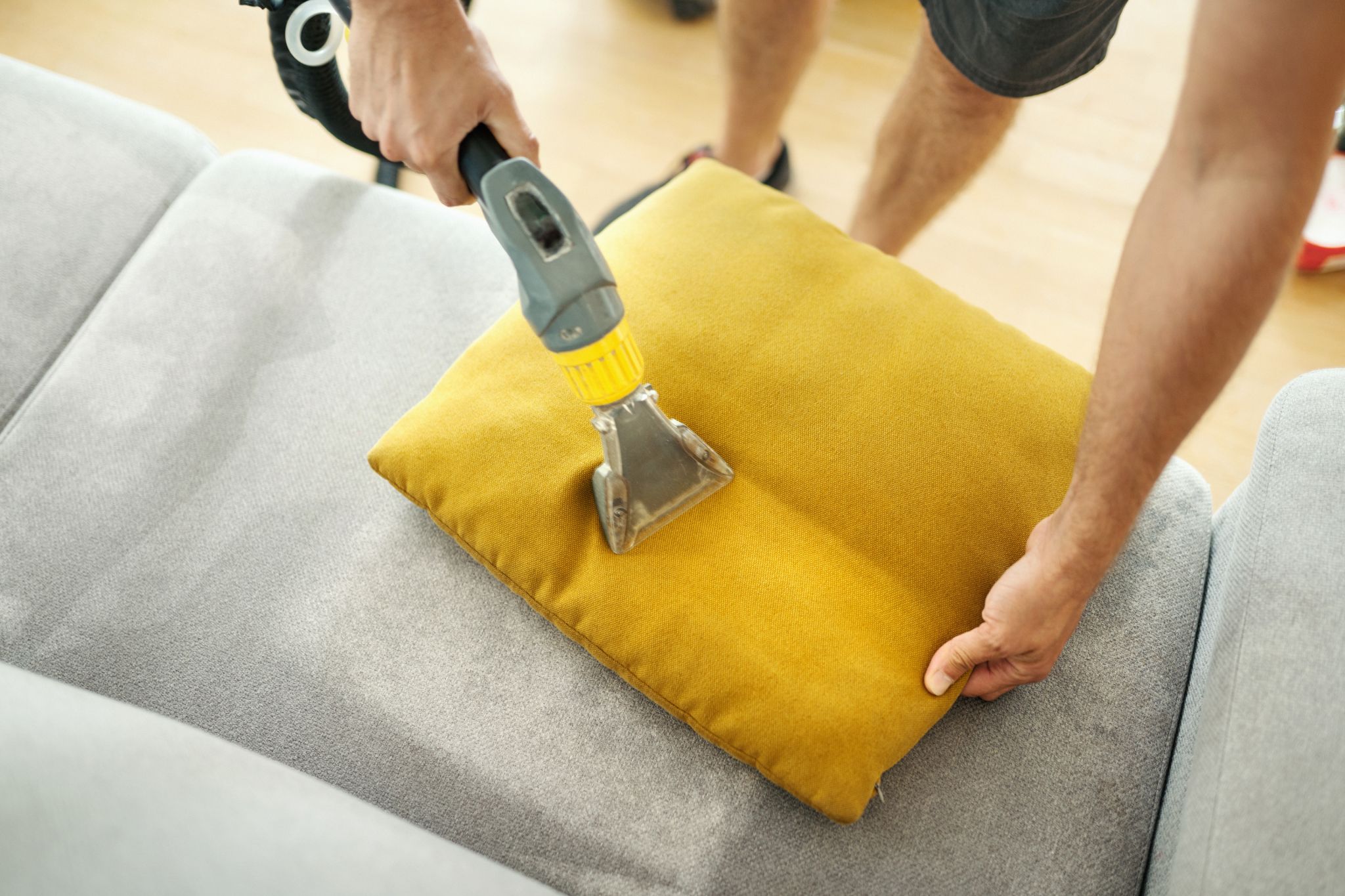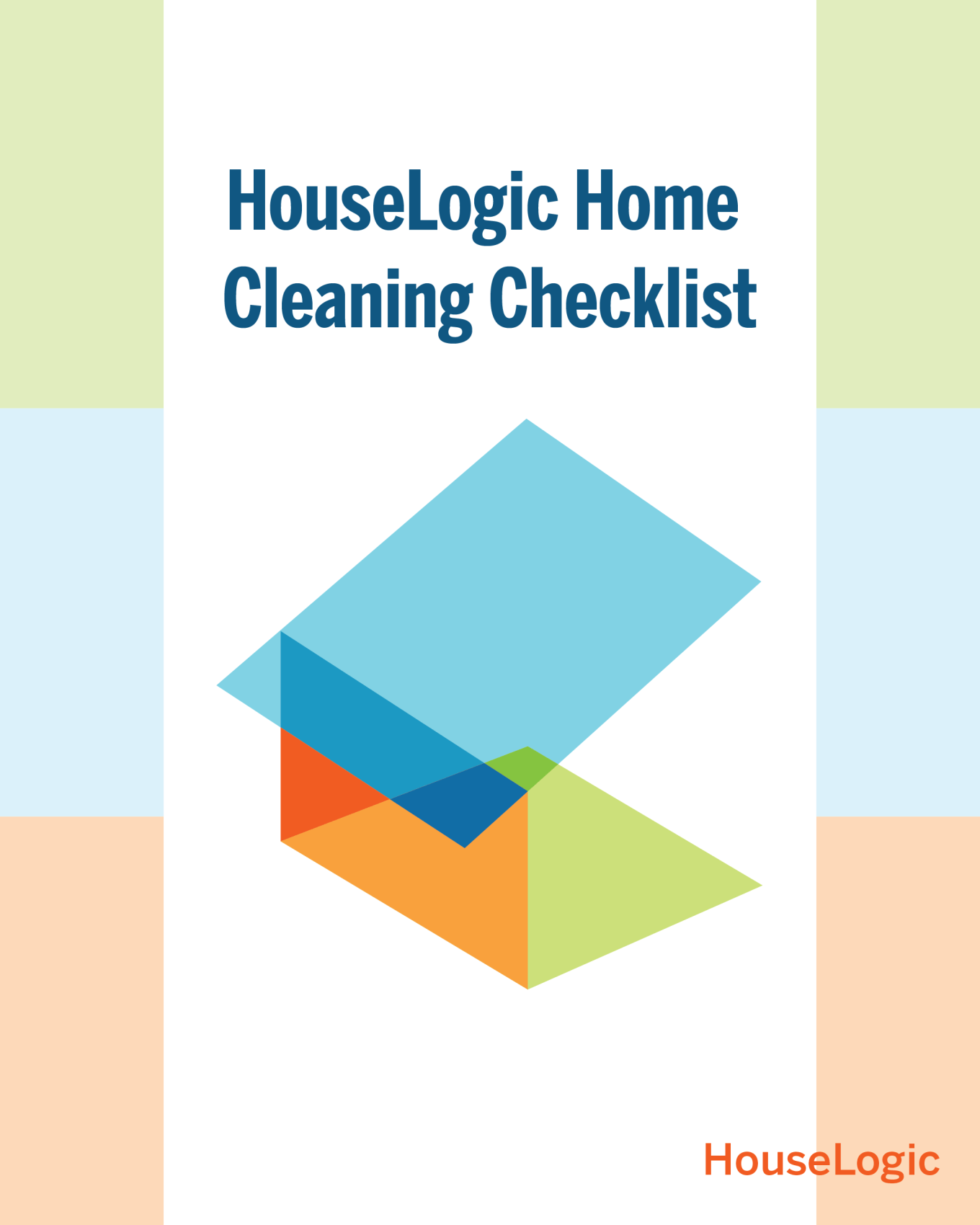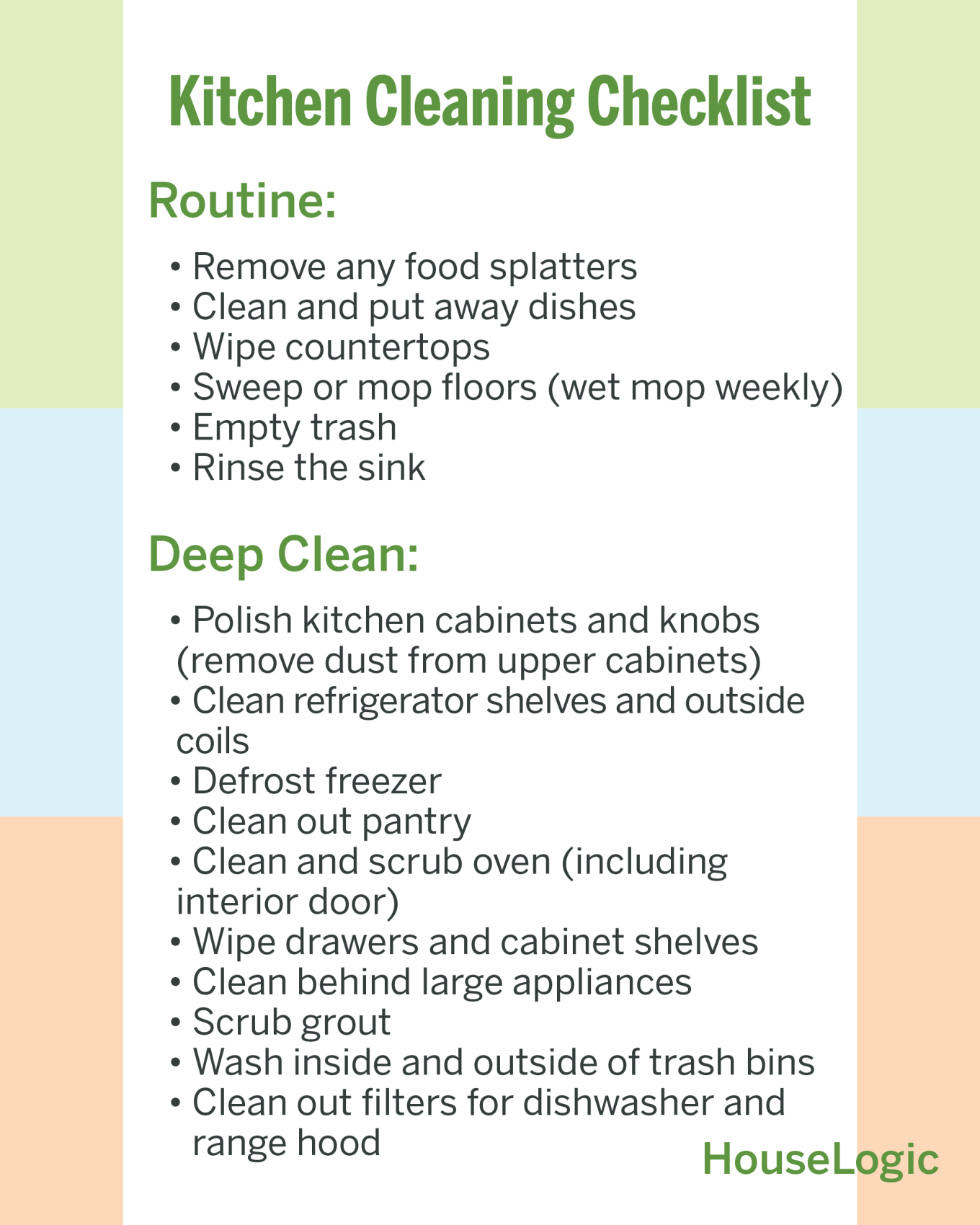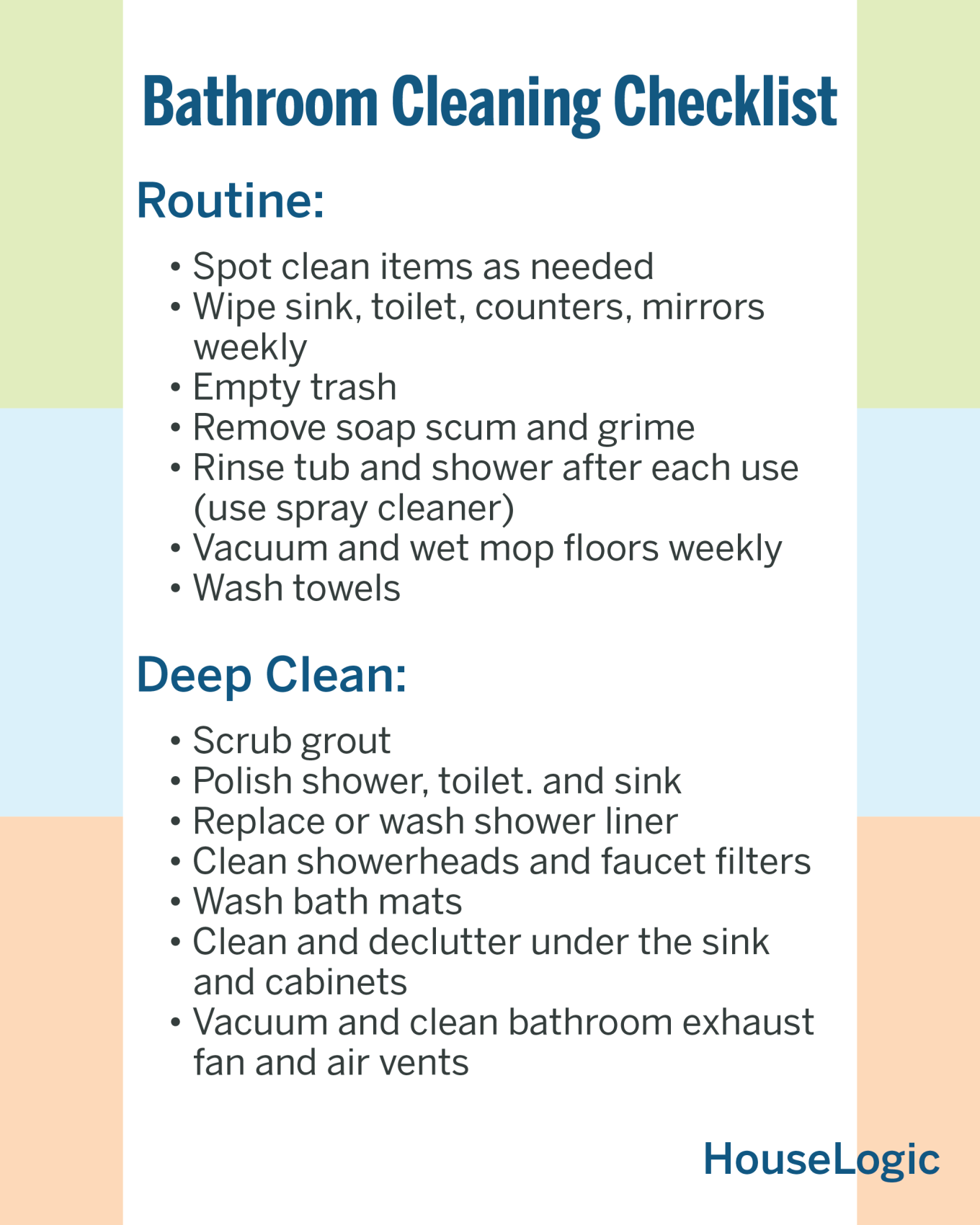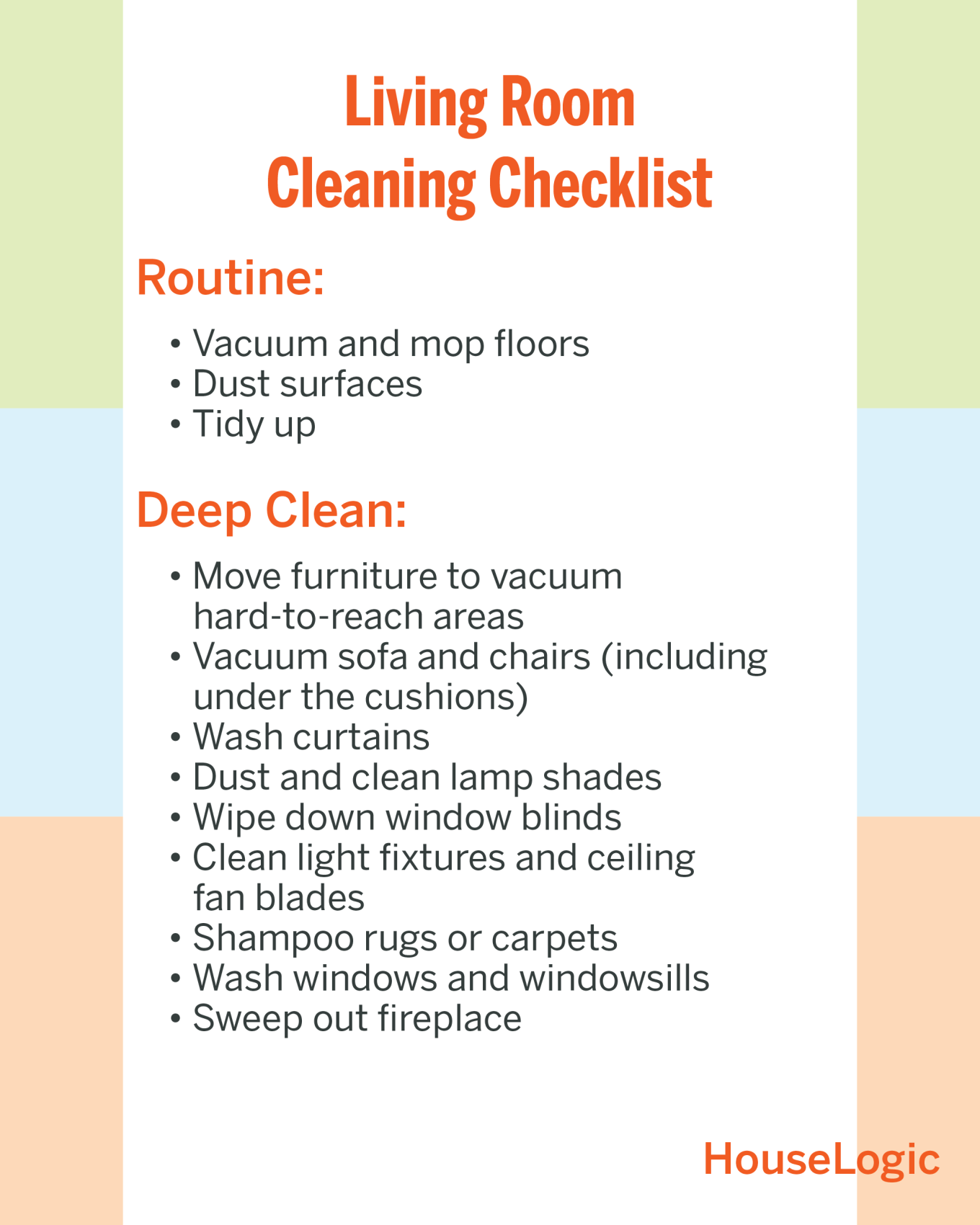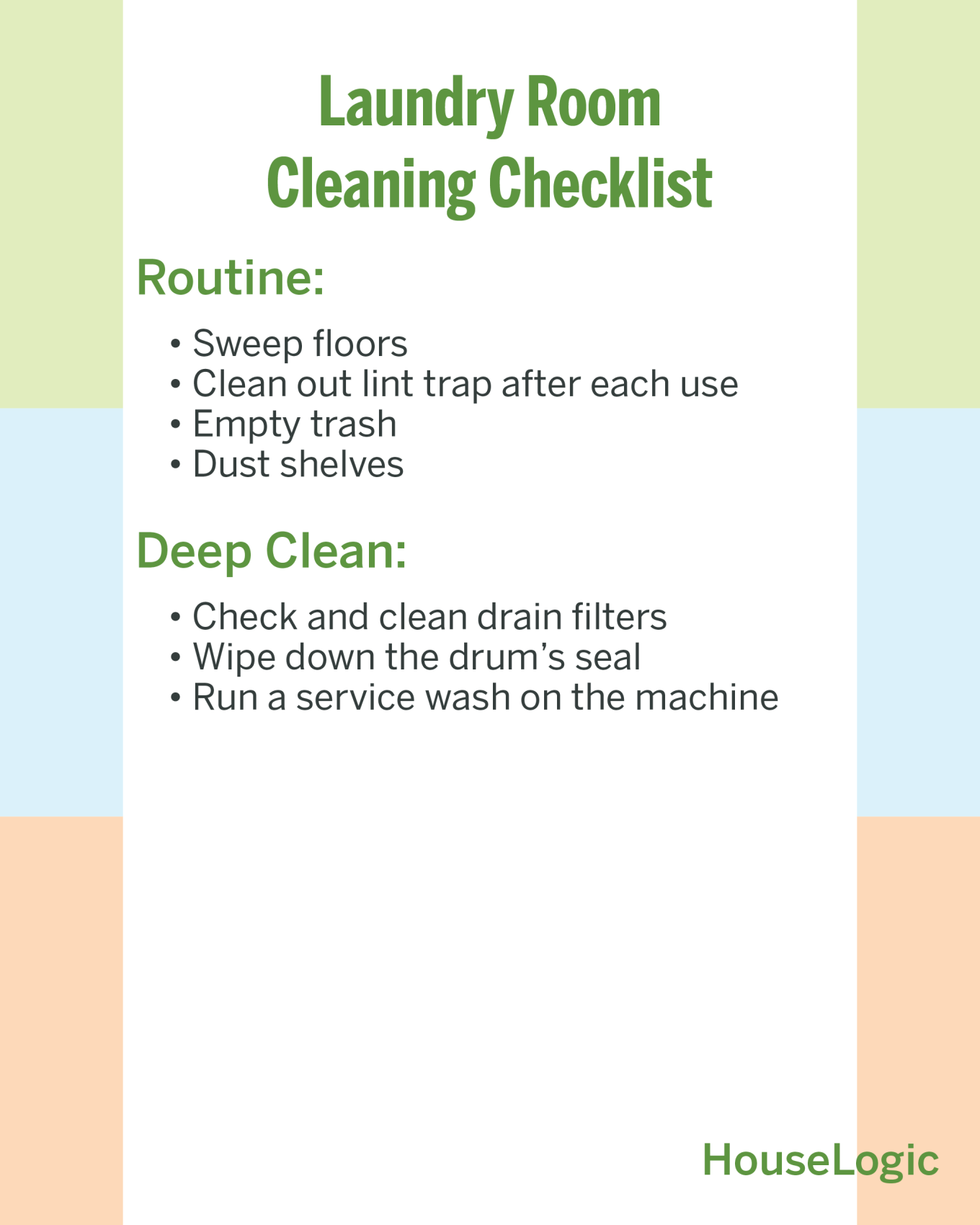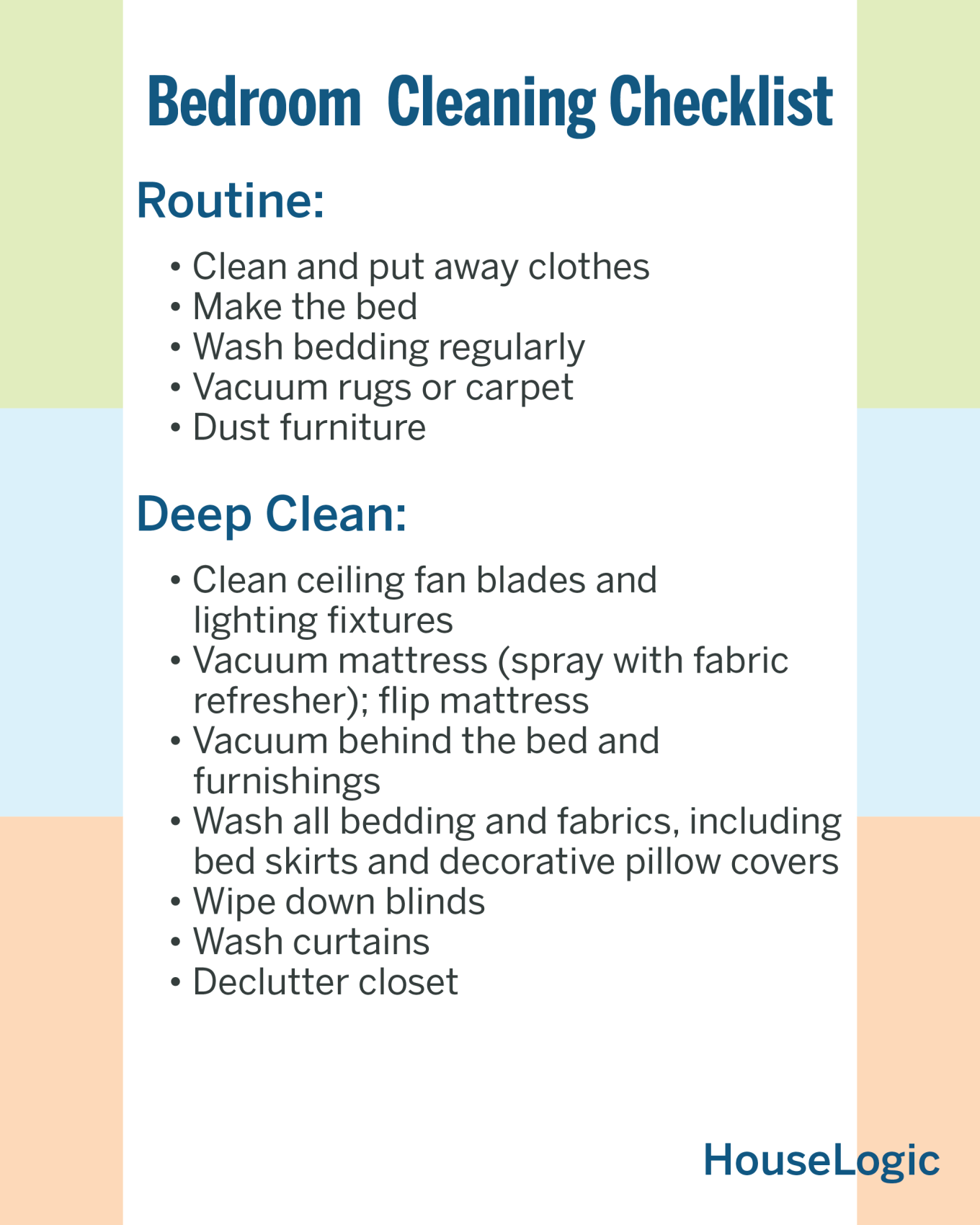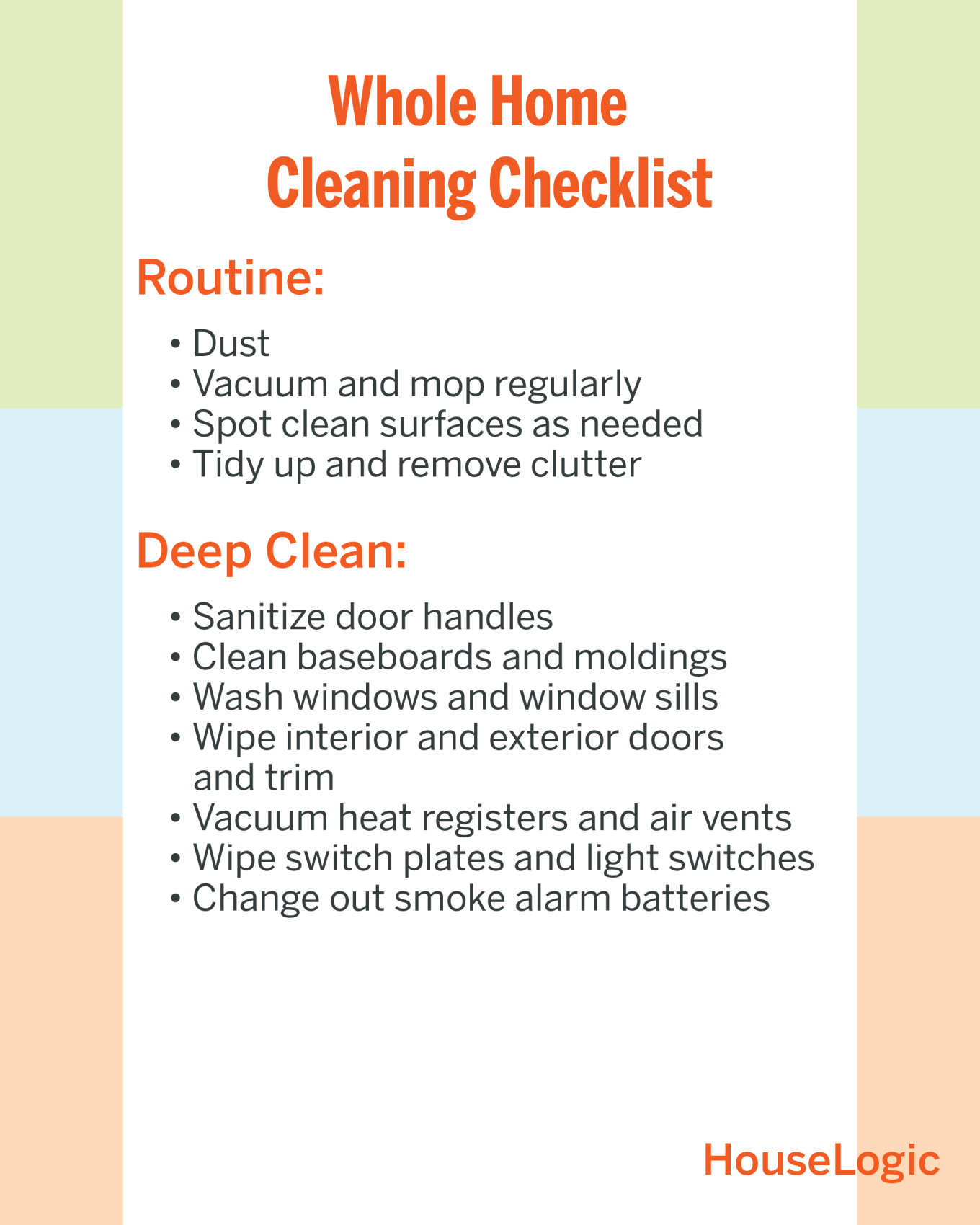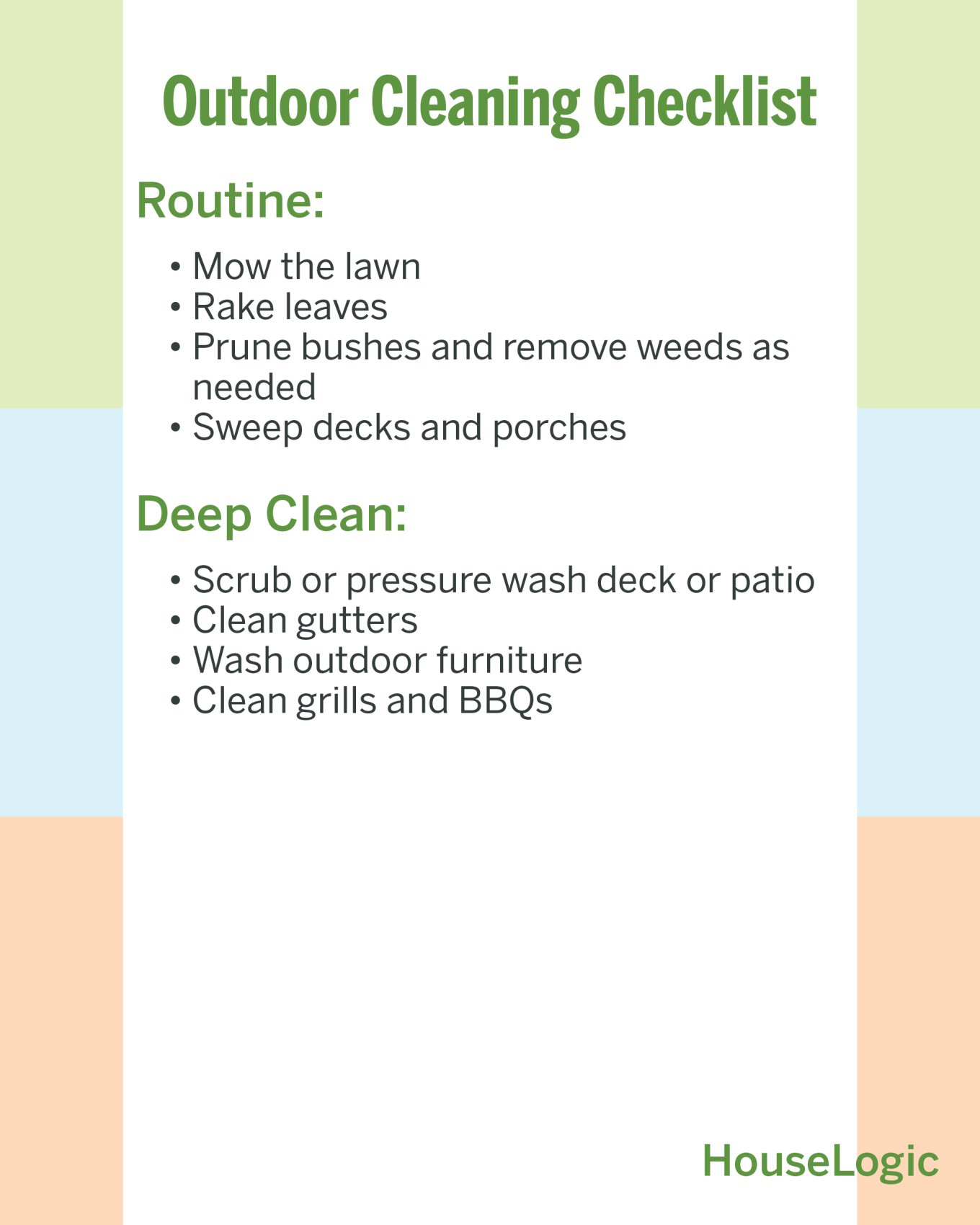With the turn of the season comes a household chore Americans love to hate: spring cleaning. Whether you call it spring cleaning or deep cleaning and do it in the spring or another time of year, the idea is the same. You break out the sponges and brooms and get scrubbin’ on — and behind and under — every surface in your home.
The reasons to do it are more than tradition. A deep clean is good not only for your home but maybe even for your mental health. Homeowners say a clean home improves their well-being and lowers their stress, according to a survey by OnePoll.
The survey, conducted in 2023, found that 68% of consumers call spring cleaning overwhelming, and many say they often postpone the heaviest tasks for days. Some never do it at all.
But consumers may be warming to the idea, according to a spring 2024 survey conducted by the American Cleaning Institute. It showed that 80% of US households do deep cleaning at least yearly. However, 10% do it every other year, and 6% don't do it at all. Another interesting finding: The biggest reason consumers dread deep cleaning is dealing with places that are hard to reach, such as behind or under furniture or appliances.
No matter where you fall on the frequency or dread scale, don't throw in the towel on getting optimal results. Read on for the low-down on deep cleaning and how to make the process less stressful (we see you, robovacs!).
When and How Often to Deep Clean
“You should do a deep clean once a year or maybe even twice a year,” says Debbie Sardone, owner of Buckets & Bows Maid Service in the Dallas area and SpeedCleaning.com. “It doesn’t have to be done in the spring; it could also be in the summer, fall, or winter, she adds.
Brian Sansoni, senior vice president at the ACI, agrees about flexible timing. “Depending on your regular cleaning routine, you can deep clean twice a year — once in the spring and again at the beginning of winter. Or you could deep clean at the beginning of each new season.” The key is to make the process more manageable.
How Is Deep Cleaning Different from Routine Cleaning?
To destress the process, it helps to break down what’s involved. Deep cleaning takes your typical day-to-day or week-to-week cleaning a lot, well, deeper. It’s all about removing dirt, grime, scum, and gunk all around your home — even under the bed and behind furniture and appliances.
Routine cleaning, which often is done weekly or every other week, focuses more on tidying up spaces and spot cleaning, including:
- Vacuuming or mopping floors
- Wiping countertops and surfaces in the kitchen and bathrooms
- Taking out the trash
- Dusting furniture and shelves
- Scrubbing toilets
- Cleaning and wiping off surfaces as they become dirty
“Deep cleaning encompasses the nooks and crannies of your space, from the blinds and curtains to walls, ceiling fans, and upholstered furniture,” Sansoni says.
“Places that collect a lot of dust and dander, like shelves and spaces behind the furniture, should be the focus of some of your deep cleaning to mitigate asthma and allergy triggers,” he adds. “High-touch areas, like doorknobs, remote controls, and even keyboards should be cleaned and disinfected to kill bacteria.”
Deep cleaning extends to purging and decluttering. “Don’t get so sidetracked vacuuming and dusting that you forget to ever purge or declutter a drawer,” Sardone says. You need to declutter periodically or else everyday messes and clutter can quickly get out of control, she adds.
How to Make Deep Cleaning Manageable
Make a home cleaning schedule that includes a room-by-room cleaning task checklist. Sardone recommends listing deep cleaning and routine cleaning chores by frequency:
- Daily: Spot cleaning and tidying up your space, such as by emptying the dishwasher, attending to any spills, cleaning, and putting away dishes or clothes.
- Weekly: Surface-level wiping of countertops, vacuuming floors, and dusting
- Periodic or deep cleaning: Wiping down baseboards, ceiling fans, and windows, and scrubbing surfaces more thoroughly than you would day-to-day.
Daily and weekly cleaning don't need to take hours. “You can spot clean in a matter of seconds,” Sardone says. “If you see a problem with the toilet, grab a toilet brush and give it a quick scrub. If you see a blemish on the bathroom mirror, wipe just the spot with cleaner. You don’t have to clean the entire mirror.”
If you keep up with daily and weekly cleaning chores, deep cleaning or spring cleaning your home will be easier, she says. “For a lot of people who don’t do deep cleaning, they likely haven’t kept up with their maintenance cleaning,” Sardone says. It makes deep cleaning so much more work, since the grime has built up to a higher level.
What Should Be on My Deep Cleaning Checklist?
A 2023 consumer survey by the ACI found that consumers list these tasks as the top priorities when deep cleaning:
- Wash windows
- Clean behind furniture
- Clean appliances
- Wash bedclothes/linens
- Scrub floors
- Clean fabrics/upholstered surfaces
- Clean the garage
- Wash curtains
- Clean the basement
Cleaning Checklist by Room
You can break down your tasks by room, as well as by routine versus deep cleaning, to help you prioritize the job and starting with the easiest room (or hardest, depending on your motivation). Here’s a checklist to help you get started.
Kitchen
Routine (daily or weekly):
- Remove any food splatters
- Clean and put away dishes
- Wipe countertops
- Sweep or mop floors (wet mop weekly)
- Empty trash
- Clean and disinfect cutting boards before and after each use
- Clear food particles and grease residue in sink and elsewhere
Deep clean:
- Polish kitchen cabinets and knobs (remove dust from upper cabinets)
- Clean refrigerator shelves and outside coils
- Defrost freezer
- Clean out pantry
- Clean and scrub oven (including interior door)
- Wipe drawers and cabinet shelves
- Clean behind large appliances
- Scrub grout
- Wash inside and outside of trash bins
- Clean out filters for dishwasher and range hood
Bathrooms
Routine (daily or weekly):
- Spot clean items as needed
- Wipe sink, toilet, counters, mirrors weekly
- Empty trash
- Remove soap scum and grime
- Rinse tub and shower after each use (use spray cleaner)
- Vacuum and wet mop floors weekly
- Wash towels
Deep clean:
- Scrub grout
- Polish shower, toilet. and sink
- Replace or wash shower liner
- Clean showerheads and faucet filters
- Wash bath mats
- Clean and declutter under the sink and cabinets
- Vacuum and clean bathroom exhaust fan and air vents
Living Room
Routine (daily or weekly):
- Vacuum and mop floors
- Dust surfaces
- Tidy up
Deep clean:
- Move furniture to vacuum hard-to-reach areas
- Vacuum sofa and chairs (including under the cushions)
- Wash curtains
- Dust and clean lamp shades
- Wipe down window blinds
- Clean light fixtures and ceiling fan blades
- Shampoo rugs or carpets
- Wash windows and windowsills
- Sweep out fireplace
Utility Room and Laundry Room
Routine (daily or weekly):
- Sweep floors
- Clean out lint trap after each use
- Empty trash
- Dust shelves
Deep clean
- Check and clean drain filters
- Wipe down the drum’s seal
- Run a service wash on the machine
Bedrooms
Routine (daily or weekly):
- Clean and put away clothes
- Make the bed
- Wash bedding regularly
- Vacuum rugs or carpet
- Dust furniture
Deep clean:
- Clean ceiling fan blades and lighting fixtures
- Vacuum mattress (spray with fabric refresher); flip mattress
- Vacuum behind the bed and furnishings
- Wash all bedding and fabrics, including bed skirts and decorative pillow covers
- Wipe down blinds
- Wash curtains
- Declutter closet
Throughout Your Home
Routine (daily or weekly):
- Dust
- Vacuum and mop regularly
- Spot clean surfaces as needed
- Tidy up and remove clutter
Deep clean:
- Sanitize door handles
- Clean baseboards and moldings
- Wash windows and window sills
- Wipe interior and exterior doors and trim
- Vacuum heat registers and air vents
- Wipe switch plates and light switches
- Change out smoke alarm batteries
Outdoors
Routine (daily or weekly):
- Mow the lawn
- Rake leaves
- Prune bushes and remove weeds as needed
- Sweep decks and porches
Deep clean:
- Scrub or pressure wash deck or patio
- Clean gutters
- Wash outdoor furniture
- Clean grills and BBQs
Frequently Asked Questions About Deep Cleaning
No matter how much you’ve developed your deep cleaning skills, you may still wonder if there’s a better way or a new gadget to lighten your cleaning load. Here are some frequently asked questions to help you check what you might be missing.
What Are the Best Cleaning Tools to Use?
You don’t need the latest and greatest innovations to clean your home. “Keep it simple and very basic,” Sardone says. “We tend to quickly complicate our cleaning with the newest products. But they can then quickly overwhelm us.” Here are Sardone’s favorite cleaning aids:
- Melamine sponges: These foam-like sponges can be used to remove scuff marks from walls and baseboards as well as layers of dirt and grime and other stubborn stains. (The Magic Eraser is a retail version of this.) These can damage surfaces if used incorrectly, so, read labels and test before use.
- Microfiber towels: Dust and dirt cling to these absorbent cloths. They require less cleaning product than a cotton towel and can be effective for “dry dusting” furniture when you don’t want to use a product.
- Robotic vacuums: These smart vacuums can navigate autonomously around a home while cleaning the floors. “These are not usually effective enough for deep cleaning a floor, but they can be fantastic in a pinch to help keep floors clean day to day,” Sardone says. They’re especially helpful at removing pet hair, she adds.
- Pumice stones: This abrasive cleaning aid can be used to gently rub out tough stains, like calcium deposits and soap scum. Sardone says they’re effective for removing gray, stubborn water lines on the inside of toilets.
- Natural/green products: Eco-friendly cleaning products don’t contain harsh chemicals. “If you can smell it, you’re inhaling it,” Sardone says. “If it makes you cough, you’re ingesting it. Consider using all-natural cleaning products with no odor.” You can buy store versions or use natural household items like baking soda and vinegar.
- All-purpose cleaners: These help to remove everyday spills and are used for spot cleaning multiple surfaces throughout the home; they’re not disinfectants (more on that in a minute).
Tip: Put your cleaning tools within easy reach. Sardone recommends keeping cleaning products below each bathroom sink, including a glass cleaner, disinfectant, and all-purpose cleaner.
Also, embrace some cleaning hacks: For example, Sansoni suggests using daily shower cleaner to keep the shower and tub surfaces clean. “Mist surfaces right after showering, while the walls are still wet. No rinsing, wiping, or scrubbing is necessary,” he says.
Which Method Should I Use for Cleaning Surfaces?
There’s no one-size-fits-all to cleaning every surface in your home. Cleaning options range from disinfecting to steaming. Some cleaning methods can even damage household surfaces if not used correctly. For example, vinegar is known for being a favorite eco-friendly cleaner, but it’s acidic and can corrode wood and stone if not used properly.
Here are three common cleaners and methods:
- All-purpose cleaners: These can be used to remove grime, grease, and everyday messes on various hard surfaces. Avoid using them on unfinished surfaces, like raw wood or unsealed stone. They’re best for countertops, floors, appliances, and everyday cleanups.
- Steam cleaning: This chemical-free solution uses steam to dissolve and remove dirt, grime, dust mites, and contaminants. Dry steam cleaners can be used on nearly any nonporous surface, like tile or sealed countertops, too. Avoid using them on drywall, marble or porous stones, or unsealed wood. It's best for flooring (carpets, sealed tile, and hardwood floors); countertops; grout lines; mattresses; and furniture.
- Disinfectants: They use chemicals, often in bleach and alcohol solutions, to kill germs on surfaces and household objects. Bottles are often labeled as “kills 99.9% of household germs.” Avoid using these for day-to-day cleaning. They're best for cleaning surfaces contaminated from cooking raw meat or preventing the spread of illness.
Tip: Sardone follows a “rule of three” when disinfecting household items. First, wipe the surface clean with an all-purpose cleaner to remove the grime and grease. Next, use a disinfectant, following the bottle instructions for how long the product should remain on the surface before wiping it away. Last, follow up with an all-purpose cleaner to remove any chemical residue from the disinfectant.
What Are the Germiest Places in a Home?
We know the usual suspects that are germ hubs in our homes, namely bathroom and kitchen surfaces, fixtures, and appliances. But what about items lurking in those rooms that you may not have thought about? Toilets are not only germy, but when flushed, they can spread microorganisms on surfaces and items nearby, according to a 2021 University of Arizona study published in the "Journal of Applied Microbiology." That means toothbrush holders and toothbrushes are directly in the line of fire. The Washington Post recommends closing the lid before flushing and storing toothbrushes in a drawer or medicine cabinet.
Other secret places for unsuspecting homeowners to clean include the disposal flange in your kitchen sink, your coffeemaker’s reservoir, sponges and towels in the kitchen, and knobs and buttons on kitchen appliances.
Here are other lesser-known areas:
- Filters: In the dishwasher, a strainer at the bottom should be routinely unscrewed and rinsed and cleaned. “It may contain months — or even years — of decaying food particles,” Sardone says. (If your dishwasher starts to smell bad, it’s a sure sign your filter needs cleaning.) The vent hood above the stove and even the microwave also have filters that need to be regularly cleaned.
- Air conditioner vents: The vent grilles on your floors or walls can become a dust magnet. Vacuum the outside and inside, and wipe gently with a towel. Also, if you have an air filter inside your vents be sure to regularly clean those, too.
- Ceiling fan blades: The top of the blades can become caked in dust over time.
- Shoe shelves: Dust balls and dirt can accumulate.
- Oven doors: The interior glass of the oven door can become coated in difficult-to-remove grime if they aren't regularly cleaned.
Should I Call a Pro for a Deep Clean?
Most cleaning businesses offer a variety of services, including a weekly or biweekly service for routine cleaning or a one-time deep clean. If you’re looking for a deep clean, be sure to ask for a specific list of what the company provides. “If the list just says sweeping, vacuuming carpets, polishing furniture, mopping, dusting, and scrubbing toilets and showers, that’s not a deep clean,” Sardone says. “But it should include things like washing baseboards, ceiling fan blades, and blinds, and wiping doors and cabinet fronts.”
What Are the Most Common Cleaning Mistakes?
No one wants mistakes, but the good news is that you can easily avoid two common ones. The first is failing to read the directions on your cleaning products, says Sansoni. It can result in damaging a household surface.
The second is “not doing anything,” Sardone says. “When you don’t keep up with cleaning, it builds up and can become unmanageable. [Problems include] soap scum that builds up in the shower or grime that builds up in the sink or a heavier coat of dust. Old dirt is way harder to clean than new dirt. That’s why it’s so important to keep up with daily, weekly, and deep cleaning.”
